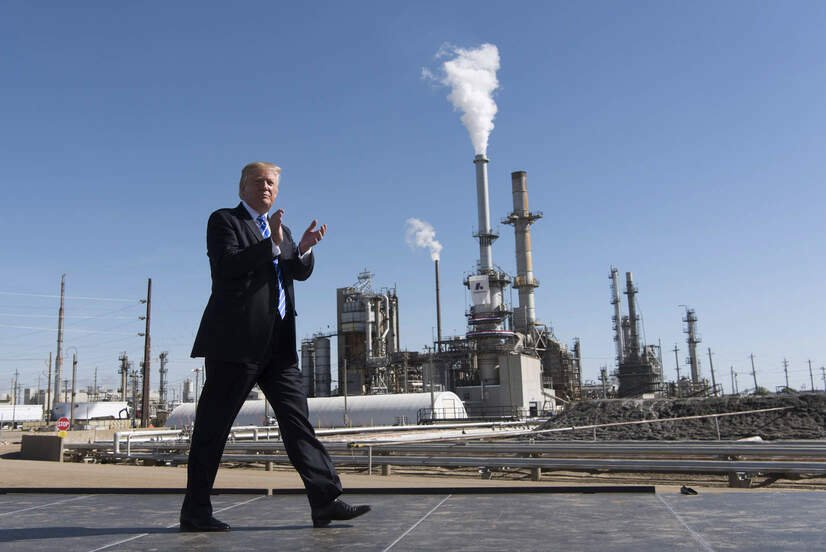(Bloomberg) — Oil soared after U.S. President Trump said that he expects Saudi Arabia and Russia to cut production back by 10 million barrels or more after he spoke with Crown Prince Mohammed Bin Salman on Thursday.
It wasn’t clear if Trump meant 10 million barrels a day, but the announcement caused West Texas Intermediate prices to surge by as much as 35% while Brent gained as much as 47%. He also told CNBC that the cut could be up to 15 million barrels.
The move comes after oil was already climbing after Beijing instructed government agencies to start buying cheap crude for its strategic reserves.
Despite the president’s optimism, Saudi Arabia has not appeared to relent its bid to flood the market yet, saying on Wednesday it was pumping at a record and had this week loaded almost 19 million barrels of oil in a single day. Meanwhile, Russia has said they are not satisfied with the oil price.
If collective action does remove 10 million barrels a day from the market that would be the equivalent of about 10% of world demand prior to the impact of coronavirus. That may not be enough to stop the pain that’s rippled across the energy industry as demand craters with the coronavirus outbreak shutting down economies around the world, according to Ben Luckock, co-head of oil trading at Trafigura. The trading houses raised its oil demand loss estimate to around 35 million barrels a day.
“We have no hope of production cuts matching the demand destruction,” he told Bloomberg, adding that by the middle to late April, “oil will have come out of the ground and will struggle to find a home.”
That view is consistent with a Goldman Sachs note earlier this week, citing that any conceivable oil production cut by the U.S., OPEC+ and Canada would still “fall well short” of their estimated 26 million barrels a day of demand loss and only provide “fleeting support to inland crude prices.”
China’s move to purchase oil for its strategic reserves comes as the physical crude market shows deepening signs of strain. Dated Brent, the benchmark for two-thirds of the world’s physical supply, was assessed at $15.135 on Wednesday, the lowest since at least 1999. Crude has slipped below $10 in some areas including Canada and shale regions in the U.S., Belarus wants to buy Russian oil for $4, while some grades have posted negative prices.
As supply balloons, there are growing signs that the world is running out of places to store the glut.
“The sheer size of the surplus should put downward pressure on the market as we move through the quarter,” said Warren Patterson, head of commodities strategy at ING Bank NV.






